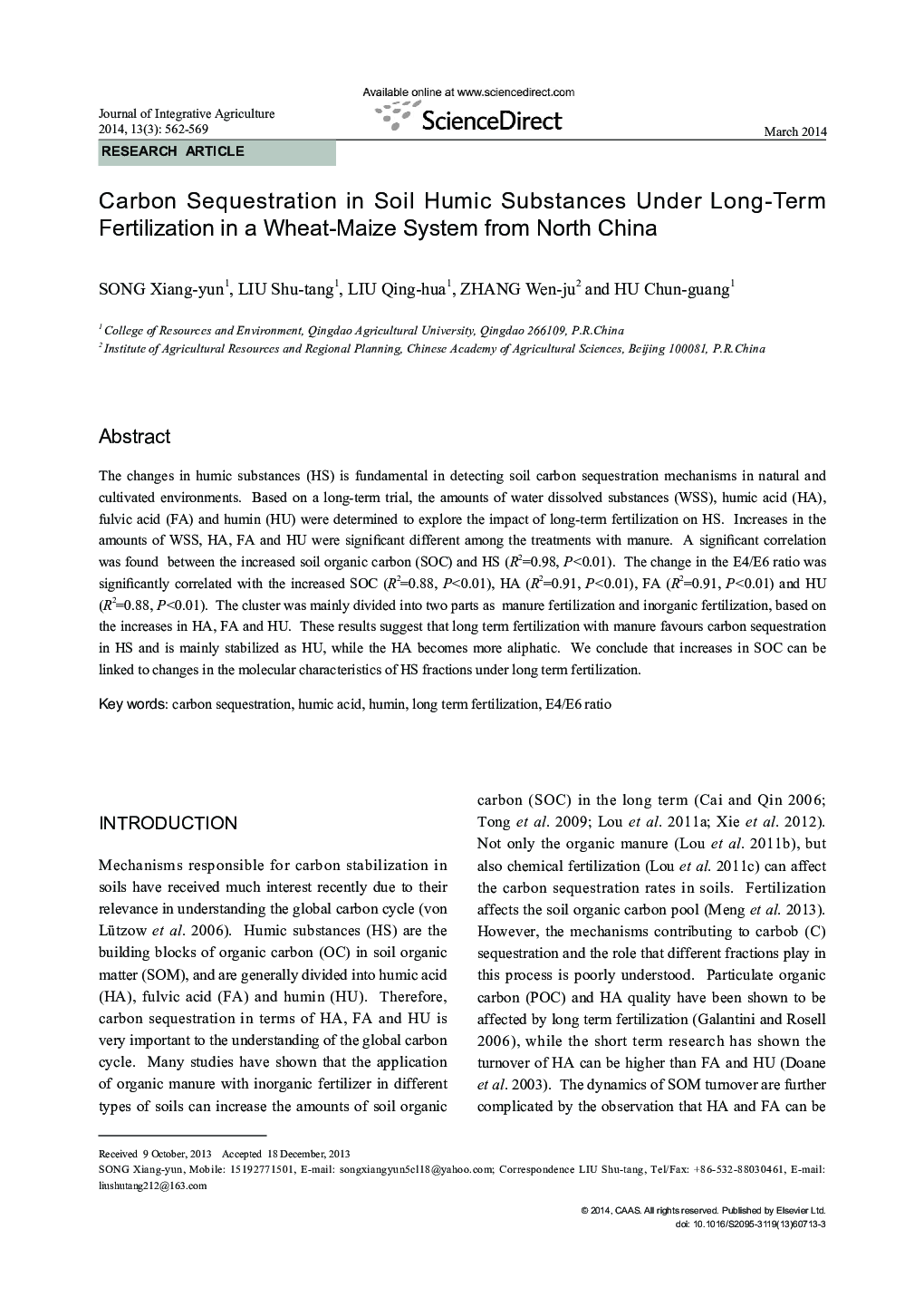| Article ID | Journal | Published Year | Pages | File Type |
|---|---|---|---|---|
| 4494662 | Journal of Integrative Agriculture | 2014 | 8 Pages |
The changes in humic substances (HS) is fundamental in detecting soil carbon sequestration mechanisms in natural and cultivated environments. Based on a long-term trial, the amounts of water dissolved substances (WSS), humic acid (HA), fulvic acid (FA) and humin (HU) were determined to explore the impact of long-term fertilization on HS. Increases in the amounts of WSS, HA, FA and HU were significant different among the treatments with manure. A significant correlation was found between the increased soil organic carbon (SOC) and HS (R2=0.98, P<0.01). The change in the E4/E6 ratio was significantly correlated with the increased SOC (R2=0.88, P<0.01), HA (R2=0.91, P<0.01), FA (R2=0.91, P<0.01) and HU (R2=0.88, P<0.01). The cluster was mainly divided into two parts as manure fertilization and inorganic fertilization, based on the increases in HA, FA and HU. These results suggest that long term fertilization with manure favours carbon sequestration in HS and is mainly stabilized as HU, while the HA becomes more aliphatic. We conclude that increases in SOC can be linked to changes in the molecular characteristics of HS fractions under long term fertilization.
